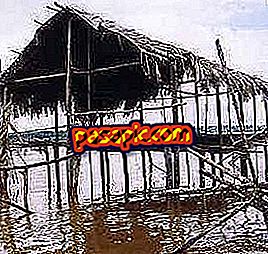Where the gypsies come from

It is one of the most common ethnic groups in Europe . The gypsies, a population with their own language and culture, spread across the European continent and, currently, there are 11 million people of this ethnic group spread across different countries in this part of the world. Despite the passage of time, they continue to maintain some very marked traditions and cultural aspects such as, for example, the importance of the family and, among them, the figure of the patriarch and the matriarch. In addition, the tradition of marrying each other is still present, as it is frowned upon for a gypsy to marry a "payo", that is, with a person who is not of their same ethnicity.
In this article we are going to discover where the gypsies come from, using a recent study published in Current Biology where the conclusions reached by experts after years of work and research are published.
The gypsy town
To know where the gypsies come from, let's look at the etymology we use to refer to this ethnic group, that is, the word "gypsy" . It comes from the "Egiptian", because, previously, there was a belief that considered that this people came from Egypt.
But, after years of study and research, we have managed to find out that the origin of the gypsies is not the African continent at all, but that we have to look a little towards the east of the world and stop in India and Pakistan, countries that They have proven to be the cradle of this population.
The 11 million gypsies currently residing in European countries all have the same point of origin: northern India and Pakistan . This information is known because a study on the genome of groups of European gypsies has appeared; the conclusions drawn have been that 1500 years ago a wave of gypsies came out from India and Pakistan to be distributed throughout Europe.

A study reveals the origin of gypsies
In order to answer your question in detail about where the gypsies come from, let's refer to a study published in the journal Current Biology by anthropologists and historians who have spent years studying the genome of this ethnic group. The results that have been published determine that North India and Pakistan is the starting point of this ethnic group.
1500 years ago was the first great migratory flow of this ethnic group that came from these two countries and spread throughout the European continent. For 600 years they were migrating, also, to other areas of the world such as Central Asia, the lands of the Caucasus and the Middle East and in none of these places did they merge with the native population, thus maintaining their culture and traditions.
However, the conclusions obtained in this study are not new; in fact, after previously conducted linguistic studies it had already been determined that northern India was the origin of the gypsies . Within this vast territory, regions such as Rajasthan, Punjab or Kashmir (which is currently divided between India and Pakistan) stand out.
The Balkans and, in particular, the area of Serbia and Bulgaria, were the territories through which the gypsies entered Europe. In just 100 years, they would have reached the most western parts of the continent, such as England and Spain.
The gypsy culture
But despite their European migration, the gypsies continue to keep alive their traditions and their customs because this town was not mixed with the local inhabitants. In addition, it is still an important premise that, within a Roma family, the children marry other members of the same ethnic group being very badly seen that they meet with people "payas", that is, non-gypsies.
Such has been their isolation from the populations where they have migrated that they have even managed to maintain their own language that is similar to Sanskrit and that originates in India. At the moment they are considered dialects of the Romany, a language that has only been transmitted orally and for which, even today, there are no written documents with this language.


